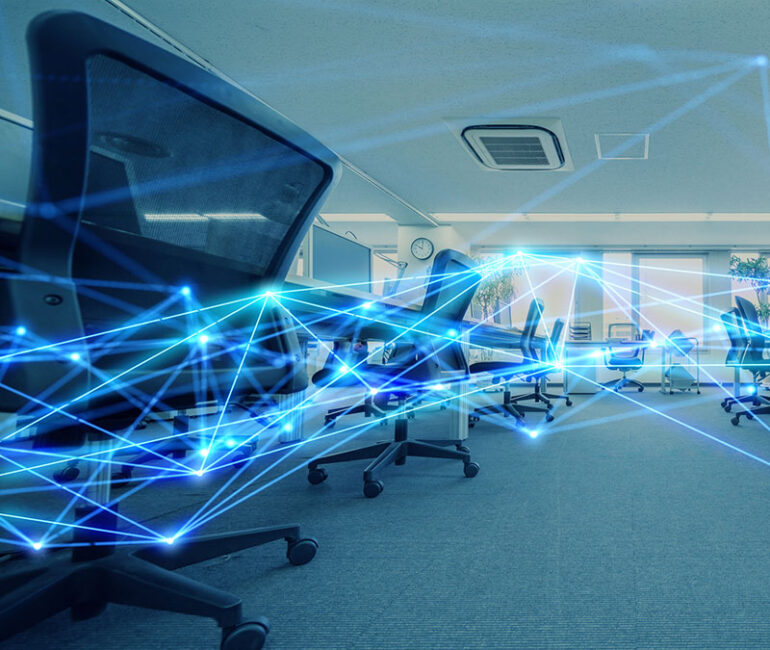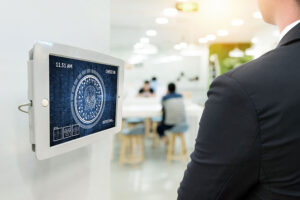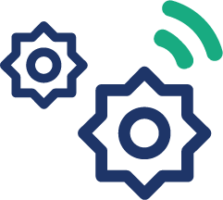Office and Workplace Automation with IoT
By Fabrizio Filizzola
September 13, 2023
By Fabrizio Filizzola
September 13, 2023

Businesses strive to do more than turn a profit. They also try to provide a safe, eco-friendly environment for employees to be successful. However, manually completing processes like monitoring air quality and restocking bathrooms can keep a company from optimizing the workplace. Moreover, physically adjusting temperature and lighting systems are neither cost-effective nor conducive to a healthy work environment.
Organizations can use Internet of Things (IoT) technology to leap into the modern age. IoT can enable businesses to automate various systems and processes throughout the office, which can:

A smart office is a smart building solution powered by IoT sensors, cameras and devices to monitor and regulate processes and conditions. An office manager can use IoT-enabled technologies to automate tasks based on specifications, which can be scheduled or fine-tuned remotely.
More than fancy gimmicks, these IoT-powered smart office automation systems empower office managers to:
There are various systems and appliances smart office technology can automate by implementing IoT. Here are four of the most noteworthy examples of office and workplace automations.

Companies can integrate IoT into office HVAC and lighting systems to regulate energy consumption and decrease the electricity bill. While offices can implement individual smart solutions, leveraging building automation systems (BASs) is generally more effective. These systems give businesses a more comprehensive overview for maximum savings.

Manually adjusting temperature can be inconvenient. Workers might not even realize why they are so uncomfortable until they look at the thermostat. With IoT sensors that cool or heat rooms depending on occupancy levels, offices can save time and money and ensure the workplace is comfortable. In addition, innovative IoT systems can track the sun’s position and close window blinds to maintain ideal working conditions.

Automating energy consumption and temperature is convenient. Meanwhile, other automations, such as air quality and ventilation monitoring, are vital to workplace health and safety. Smart offices can use IoT sensors to monitor air quality and filtration system effectiveness to reduce pathogens and dust and increase worker happiness and productivity. Moreover, these sensors can detect threats people don’t notice immediately, like carbon monoxide level spikes.

Offices can ensure their restrooms, kitchens and vending machines get replenished on time with IoT sensors. These connected devices can monitor usage, prevent spoilage and even detect mechanical problems to avoid failure. Plus, the IoT sensors in these various appliances and amenities can generate reports based on the data they collect. This valuable information will allow office managers to gauge refills accurately and pursue other strategic initiatives.
It is important to remember the potential security challenges and risk factors associated with any IoT deployment. For instance, having more IoT devices increases the attack surface that hackers can exploit. This again highlights the importance of relying upon a trustworthy IoT partner for your smart office connected devices.
Moreover, there are connectivity considerations workplaces must address so that their IoT-powered office automations can function properly.
Our IoT enablement solutions help businesses optimize workplaces and maintain reliable connectivity with wireless modules, data orchestration platforms and robust SIM cards. At the same time, our solutions protect the business from cyber threats and risks.
Speak with our IoT experts to start developing your smart building IoT application for office and workplace automation.